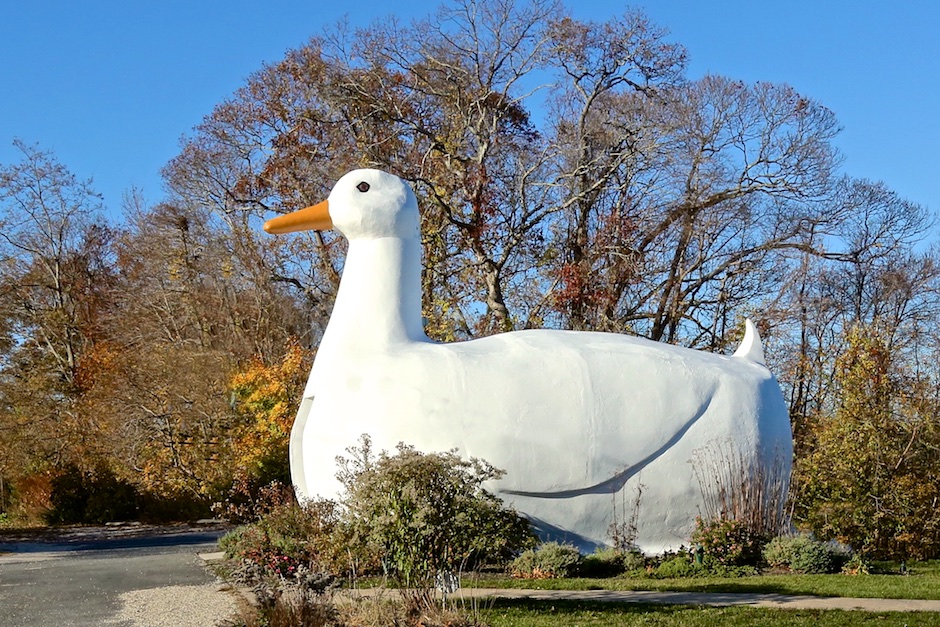

THE HISTORY OF THE BIG DUCK
In 1931, Riverhead duck farmer Martin Maurer and his wife Jeule decided to construct a giant duck-shaped duck shop. They hoped to sell the Peking ducks they raised to passing motorists who would surely be drawn to the striking form of a “big duck” along Riverhead’s West Main Street. The Maurers envisioned this plan while vacationing in California, where they are known to have visited a roadside coffee shop shaped like a giant coffee pot.
Seeking local assistance, the Maurers hired carpenter George Reeve and two eccentric stage show set designers, brothers William and Samuel Collins. A live duck tied with a string to their porch served as a model for the Collins’ design. Reeve studied the carcass of a cooked chicken in order to create a sturdy, bird-accurate frame-work for the building. Construction of the Big Duck had begun!
After the Big Duck’s wooden frame had been pieced together, wire mesh was attached. Cement was applied to the wire mesh with the assistance of Smith and Yeager Builders. The Big Duck was painted a lovely bright white (save for the beak, of course, which was given its street-line orange color). The finishing touch was the placement of two Model-T taillights in the Big Duck’s head for eyes that would glow red at night. The Big Duck in its entirety measures 30 feet from beak to perky tail, 15 feet from folded wing to folded wing, and 20 feet from its base to the top of its head. As duck farms in the 1930’s were commonly known as duck ranches, Martin Maurer had his giant duck shop and business trademarked as The Big Duck Ranch.
The Big Duck roosted at The Big Duck Ranch on West Main Street till 1936. The Maurers had sold quite a few ducks from their unique shop and decided to relocate, Big Duck and all, to Route 24 in Flanders. The Flanders community welcomed the Big Duck with open arms and have cherished it ever since.
The Big Duck’s popularity grew, and continues to grow, steadily. When the land where the Big Duck rested was slated for development in 1987, Big Duck fans from all over joined Suffolk County in an effort to preserve the Big Duck. The Big Duck’s then current owners, Kia and Pouran Eshghi, generously donated the Big Duck to Suffolk County in December of 1987. The Big Duck was moved to its current and final resting place at the entrance to Sears Bellows County Park, a bit further east on Route 24 from its former nest. The Big Duck is now open to the public as a gift shop. Unusual Peking duck merchandise, lovingly referred to as duck-a-bilia, along with other Long Island specialties, now fills The Big Duck Store. — Courtesy of Suffolk County Parks & Tourism. www.suffolkcountyny.gov/Visitors/ParksandTourism.aspx
Suffolk County Parks & Tourism
www.suffolkcountyny.gov/Visitors/ParksandTourism.aspx
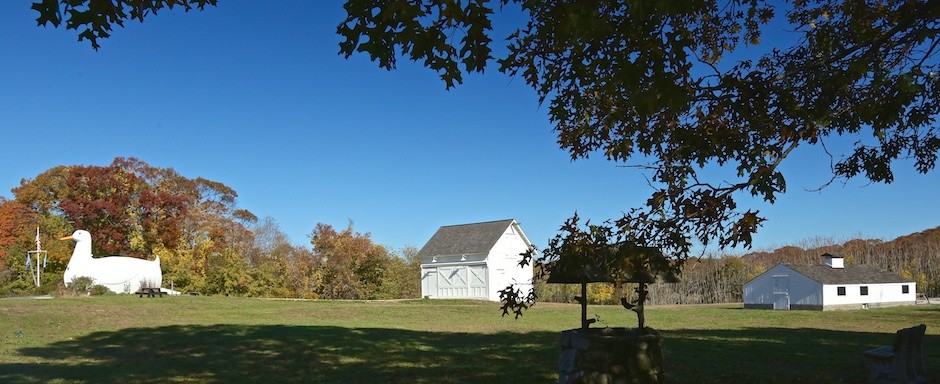
November 4, 2015
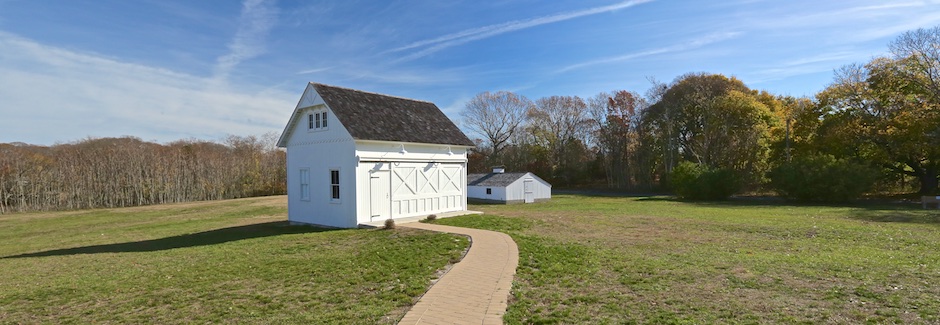
November 15, 2015
———————————————————-

World Famous Duck Architecture
While The Big Duck is a well-known Long Island landmark, it has also lent its name to a specific style of roadside architecture. The architectural term “duck” was coined by architects Robert Venturi and Denise Scott Brown in 1968. Duck buildings are highly sculptural forms which represent products or services available within, as opposed to the more common “decorated sheds” which are plain buildings whose functions are revealed by added signage. With Suffolk County’s Big Duck, as with other architectural ducks, the building itself is the signage, a colossal, three-dimensional, representational advertisement. Designed to mesmerize passing motorists and entice them ultimately to a purchase, ducks are fantastical while retaining their purely practical intentions. The Big Duck has become the most famous example of roadside architecture.
Another well-known architect named James Wines has proposed the Duck Design Theory – D.D.T. – part of which states: “Form follows fantasy not function, for architecture that cannot offer fantasy fails man’s needed dream.” — Courtesy of Suffolk County Parks & Tourism.
Suffolk County Parks & Tourism
www.suffolkcountyny.gov/Visitors/ParksandTourism.aspx
————————————————————–
THE BIG DUCK RANCH
After The Big Duck was saved from demolition by Suffolk County in 1986 and moved to nearby Sears Bellows Park, the familiar structure was designated a Southampton Town landmark. In 2001 the open space and former site of The Big Duck was acquired as parkland by Southampton Town, and in 2007 the duck was returned to its original site. The Big Duck Ranch (as the property became known) was listed on the National Register of Historic Places in 2008. The surviving farm structures on the property are remnants of a once prosperous duck farm that featured the larger-than-life Big Duck as its retail store and roadside attraction. — Zach N. Studenroth, Southampton Town Historian.
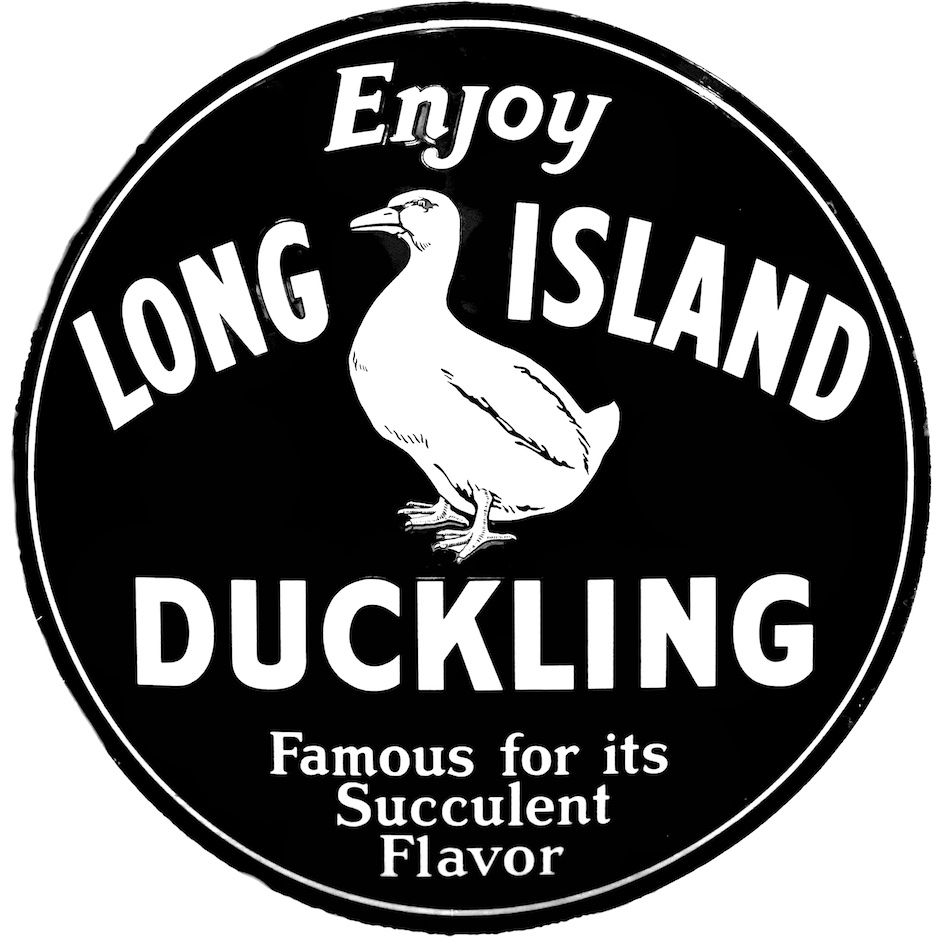
Archival Sign, Big Duck Gift Shop
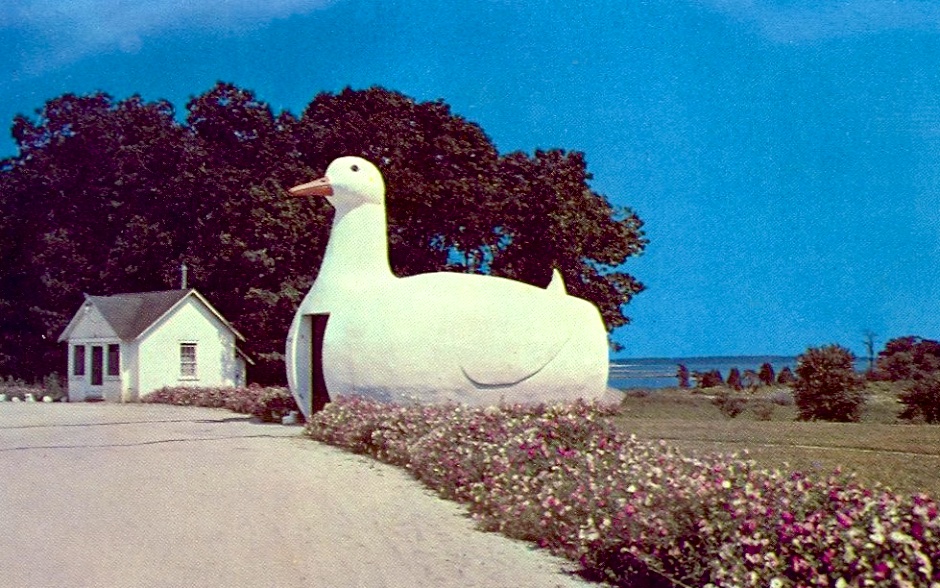
Archival postcard courtesy of Southampton Historical Museum.
——————————————
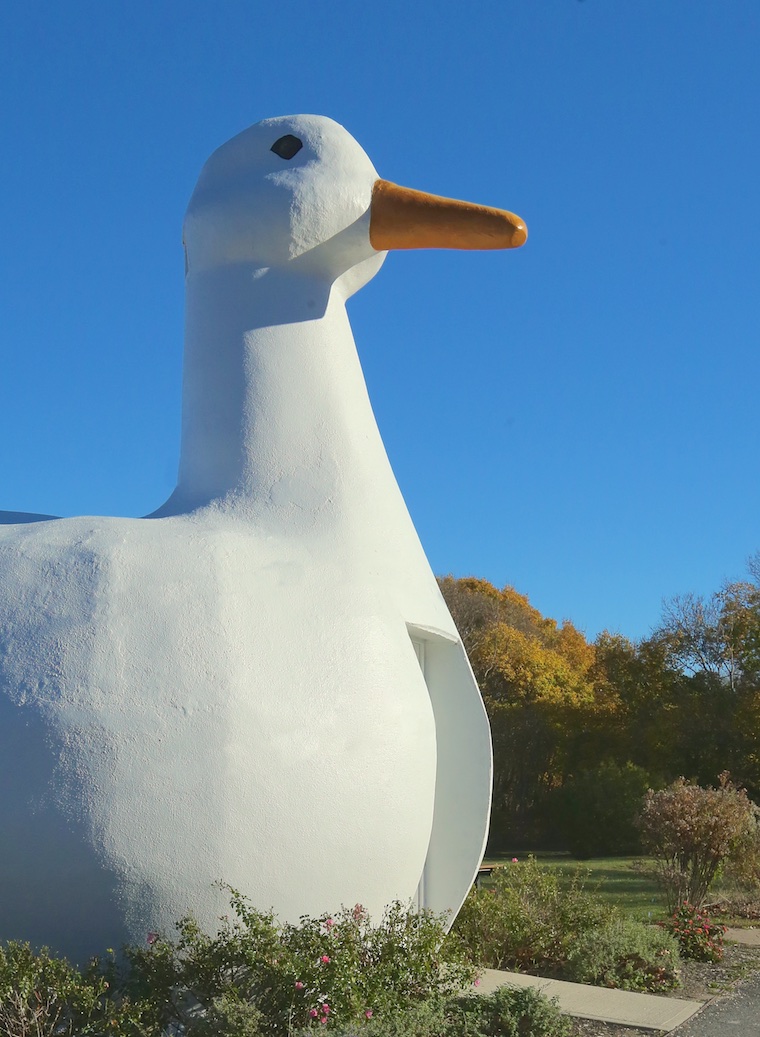
First archival postcard from Eric Woodward’s Collection. Visit AAQ’s Portfolio Album:
aaqeastend.com/contents/woodward-local-postcard-sampling/
Second archival postcard courtesy of the Southampton Historical Museum:
www.southamptonhistoricalmuseum.org
Click here to visit Friends of the Big Duck
____________________________________________________

